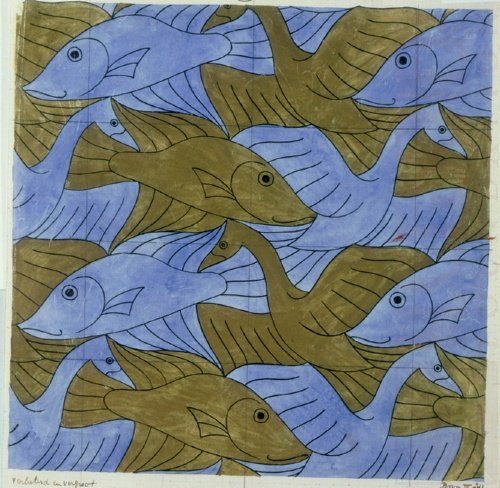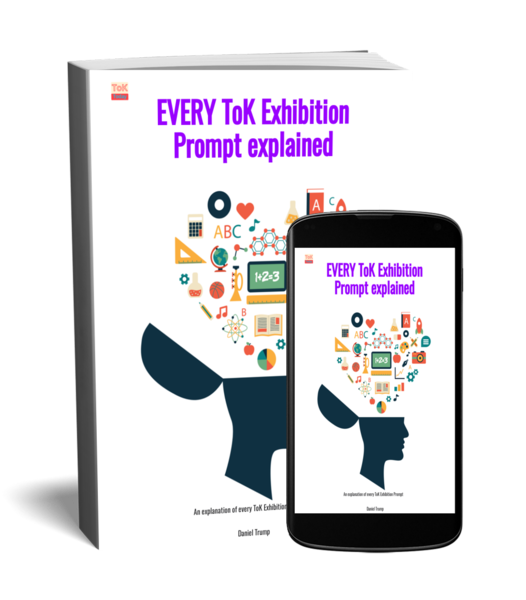ToK and Structuralism: A Study of Knowledge or Relationships?
Structuralism and ToK sounds complex, let's start with a straightforward question:
Is ToK (Theory of Knowledge) the study of knowledge or is it actually the study of the relationship between phenomena? We can explore this using some illustrative examples.
Understanding the World Through Structuralism
Using the masterful drawings by Dutch artist MC Escher, we can delve deeper into these relationships. Notice the blue and white-grey fish; Do they define each other? Could one exist without the other? Are the fish at all important, or is it the relationship between them which is vital?
Similarly, look at this other illustration. The color of the animal does not accord with a specific animal, so is the shape determined by the animals around it? This brings us to the idea of structuralism, where it's the relationships between things that define them rather than the things themselves. This concept forms the backbone of much of what we learn in ToK.
Some of the people who wrote the theory of knowledge believe that it is the relationship between things which forms knowledge rather than the knowledge itself. These people are called Structuralists, and their thinking informs much of what we learn in ToK. Therefore I think we need to look at structuralism in more detail.
The Birth and Expansion of Structuralism
Structuralism emerged in the early 20th century through the work of linguists like Ferdinand de Saussure and later expanded to other fields by scholars such as Claude Lévi-Strauss in anthropology and Louis Althusser in philosophy. Structuralism is a way of understanding how we interpret and construct meaning from our experiences, and therefore it is one way of explaining how we produce and acquire knowledge.
Understanding Structuralism: Relationships and Structures
At its core, structuralism proposes that our understanding of reality is not based on individual elements themselves, but rather on the relationships and structures that connect these elements. De Saussure argued that language, for instance, functions not due to the inherent meanings of words, but because of the differential network of relationships between them. For example, we understand the meaning of "day" because we understand its difference from "night"
Structuralism: Binary opposite relations.
In this perspective, meaning is constituted through binary oppositions and relations, implying that the essence of any element can only be comprehended in its relation to others within a given structure. This idea rejects the notion of intrinsic meaning, emphasising instead the collective structures that underpin our understanding and knowledge. As such knowledge does not have inherent meaning, but is relative and contestable.
Structuralism and ToK: Decoding the Interconnectedness
Applying this to ToK, the structuralist view suggests that these structures are not just external, but also internalised and form a crucial part of our cognitive apparatus. ToK Essay prompts often delve into the organisation & classification of knowledge, and many ToK Exhibition questions address structuralism.
Structuralism in Areas of Knowledge
In AoK The Arts, and Optional Themes Knowledge and Language, religion and indigenous societies, structuralist ideas, as proposed by Claude Lévi-Strauss, extend to the study of cultures. These ideas lead us to focus not on the knowledge itself, but on the underlying structures that define it. Strauss proposed that cultural phenomena like myths, rituals, and social norms can be understood as systems of symbolic communication operating on structural laws. The meanings of these phenomena emerge from their position within a larger, structured set of cultural relations.
As such we’re not focussing on the knowledge itself (e.g. knowledge as objects), but we’re looking at the underlying structures on which we place, or define knowledge. You will have come across this in many of your hexagon diploma studies. For example in Language A you may have looked at textual structures, story arcs or narrative structures. In Language B you will have looked at verb structures. In Individuals and Societies & Natural Sciences you may have looked at the methodology for carrying out research, and so on. The underlying structures on which knowledge is formed and defined are all around us.
Structuralism and Its Profound Impact
Structuralism’s core tenet, that meaning and knowledge are dependent on structures of relationships, has profoundly shaped our understanding of knowledge, language, culture, and cognition. It remains a critical tool for exploring how we generate and organise knowledge, offering deep insights into the relational nature of meaning and understanding.
Looking Ahead: Exploring Structuralism Further in ToK
In the next blog in this mini-series on Structuralism and ToK, I will look at how the work of some key structuralist writers has influenced our Theory of Knowledge. In the final blog in the series, I will address the critique of structuralism, and consider some post-structuralists.
For extra help with your ToK Essay or Exhibition, we have loads of resources available on from our student support page, including ToK coaching, written feedback and the ever-popular e-book, Every ToK Exhibition Prompt explained.
Stay toktastic my friends.
If you’re doing your ToK Essay you may be interested in:
The Ebook : How to Write the ToK Essay in 6 Easy Steps
3 Tips for choosing your ToK Essay Title.
Scientific Anomalies in the production of knowledge.
If you’re writing your ToK Exhibition Commentary you may be interested in:
Linking the object to the Prompt,







